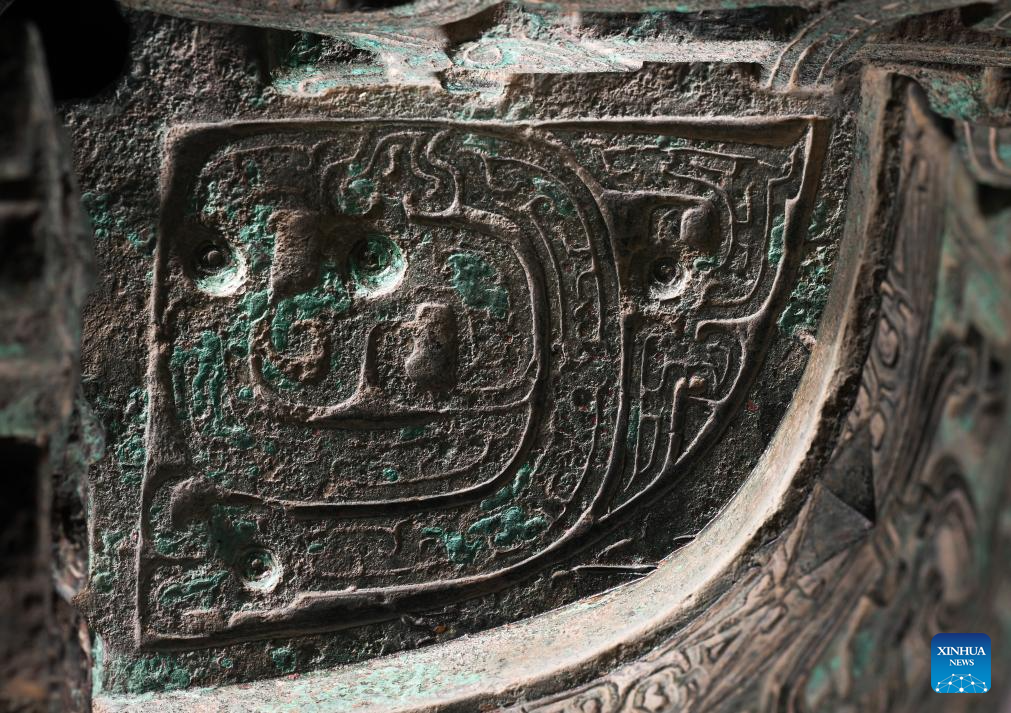
This photo taken on Jan. 23, 2024 shows the pattern of dragon on a piece of Qin Gong Bo at Baoji Bronze Ware Museum in Baoji, northwest China's Shaanxi Province. Kept in Baoji Bronze Ware Museum, Qin Gong Bo is a type of bronze percussion instrument dating back to the Spring and Autumn period (770 B.C.-476 B.C.). In 1978, three pieces of Qin Gong Bo were unearthed in Baoji.
In addition to its exquisite design, it boasts significant value in calligraphy and historical data with an inscription of 135 Chinese characters. (Xinhua/Li He)
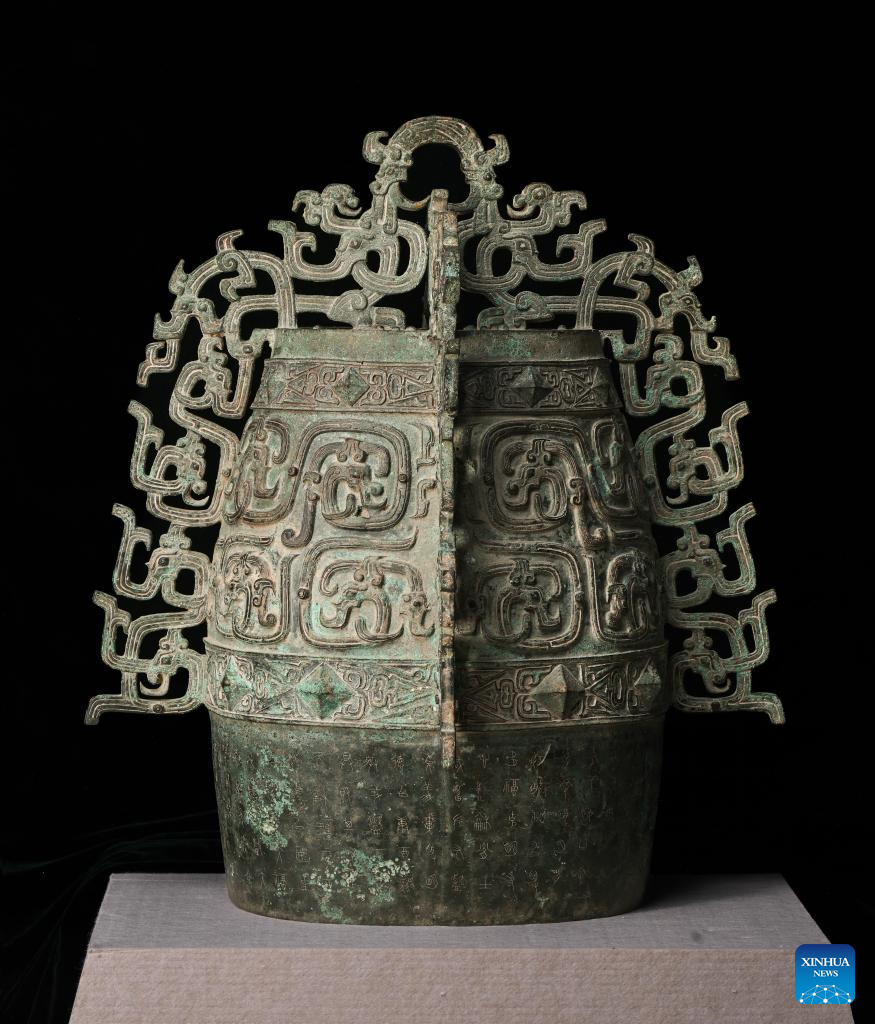
This photo taken on Jan. 23, 2024 shows a piece of Qin Gong Bo at Baoji Bronze Ware Museum in Baoji, northwest China's Shaanxi Province. Kept in Baoji Bronze Ware Museum, Qin Gong Bo is a type of bronze percussion instrument dating back to the Spring and Autumn period (770 B.C.-476 B.C.). In 1978, three pieces of Qin Gong Bo were unearthed in Baoji.
In addition to its exquisite design, it boasts significant value in calligraphy and historical data with an inscription of 135 Chinese characters. (Xinhua/Li He)
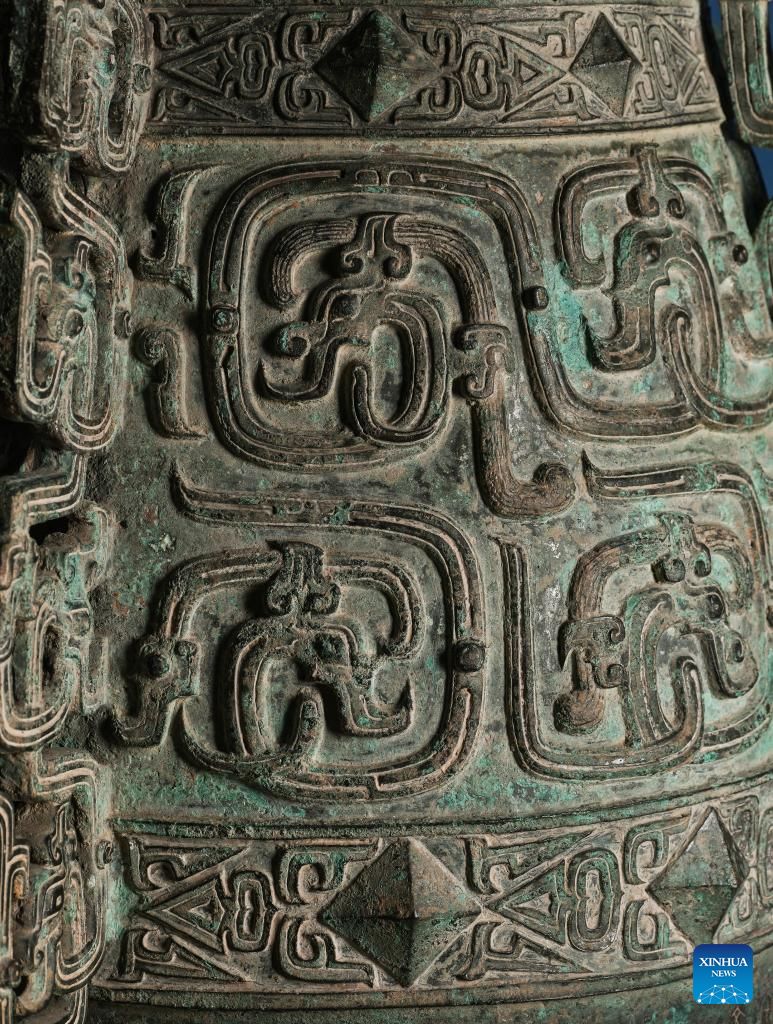
This photo taken on Jan. 23, 2024 shows the pattern of dragon on a piece of Qin Gong Bo at Baoji Bronze Ware Museum in Baoji, northwest China's Shaanxi Province. Kept in Baoji Bronze Ware Museum, Qin Gong Bo is a type of bronze percussion instrument dating back to the Spring and Autumn period (770 B.C.-476 B.C.). In 1978, three pieces of Qin Gong Bo were unearthed in Baoji.
In addition to its exquisite design, it boasts significant value in calligraphy and historical data with an inscription of 135 Chinese characters. (Xinhua/Zou Jingyi)
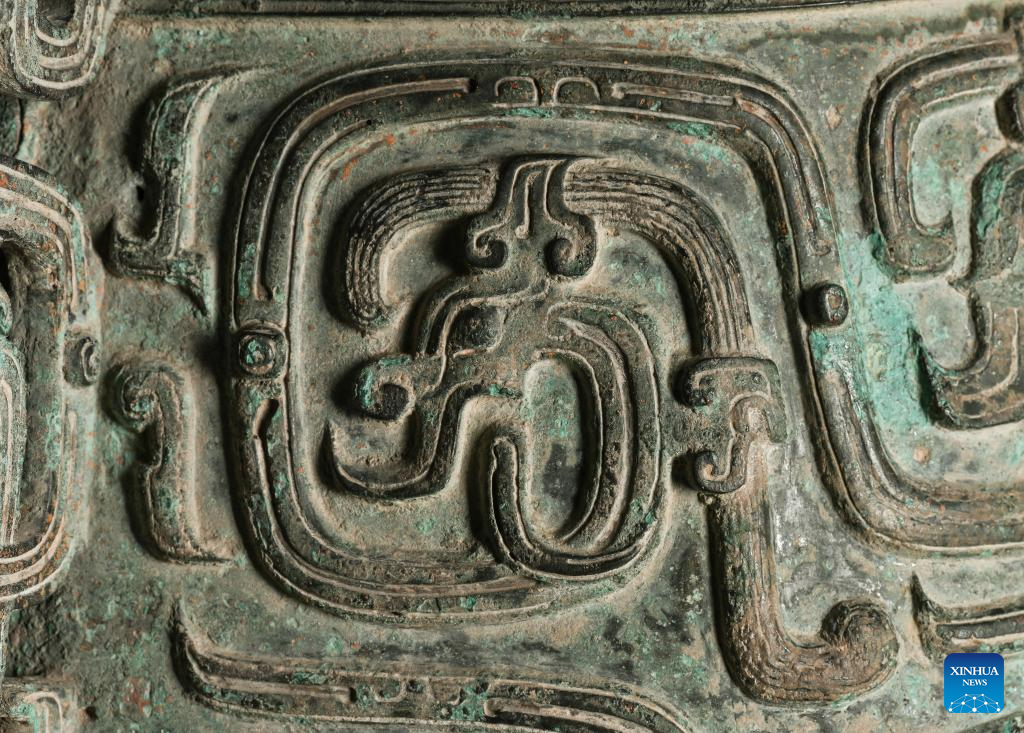
This photo taken on Jan. 23, 2024 shows the pattern of dragon on a piece of Qin Gong Bo at Baoji Bronze Ware Museum in Baoji, northwest China's Shaanxi Province. Kept in Baoji Bronze Ware Museum, Qin Gong Bo is a type of bronze percussion instrument dating back to the Spring and Autumn period (770 B.C.-476 B.C.). In 1978, three pieces of Qin Gong Bo were unearthed in Baoji.
In addition to its exquisite design, it boasts significant value in calligraphy and historical data with an inscription of 135 Chinese characters. (Xinhua/Li He)
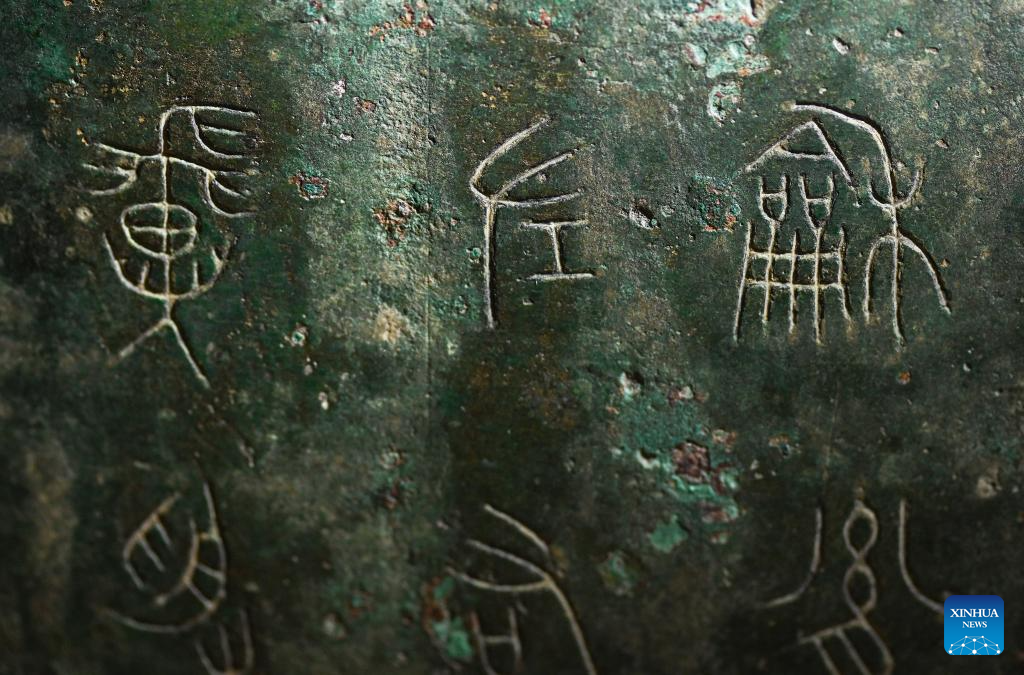
This photo taken on Jan. 23, 2024 shows part of the inscription on a piece of Qin Gong Bo at Baoji Bronze Ware Museum in Baoji, northwest China's Shaanxi Province. Kept in Baoji Bronze Ware Museum, Qin Gong Bo is a type of bronze percussion instrument dating back to the Spring and Autumn period (770 B.C.-476 B.C.). In 1978, three pieces of Qin Gong Bo were unearthed in Baoji.
In addition to its exquisite design, it boasts significant value in calligraphy and historical data with an inscription of 135 Chinese characters. (Xinhua/Li He)

This photo taken on Jan. 23, 2024 shows part of the inscription on a piece of Qin Gong Bo at Baoji Bronze Ware Museum in Baoji, northwest China's Shaanxi Province. Kept in Baoji Bronze Ware Museum, Qin Gong Bo is a type of bronze percussion instrument dating back to the Spring and Autumn period (770 B.C.-476 B.C.). In 1978, three pieces of Qin Gong Bo were unearthed in Baoji.
In addition to its exquisite design, it boasts significant value in calligraphy and historical data with an inscription of 135 Chinese characters. (Xinhua/Li He)
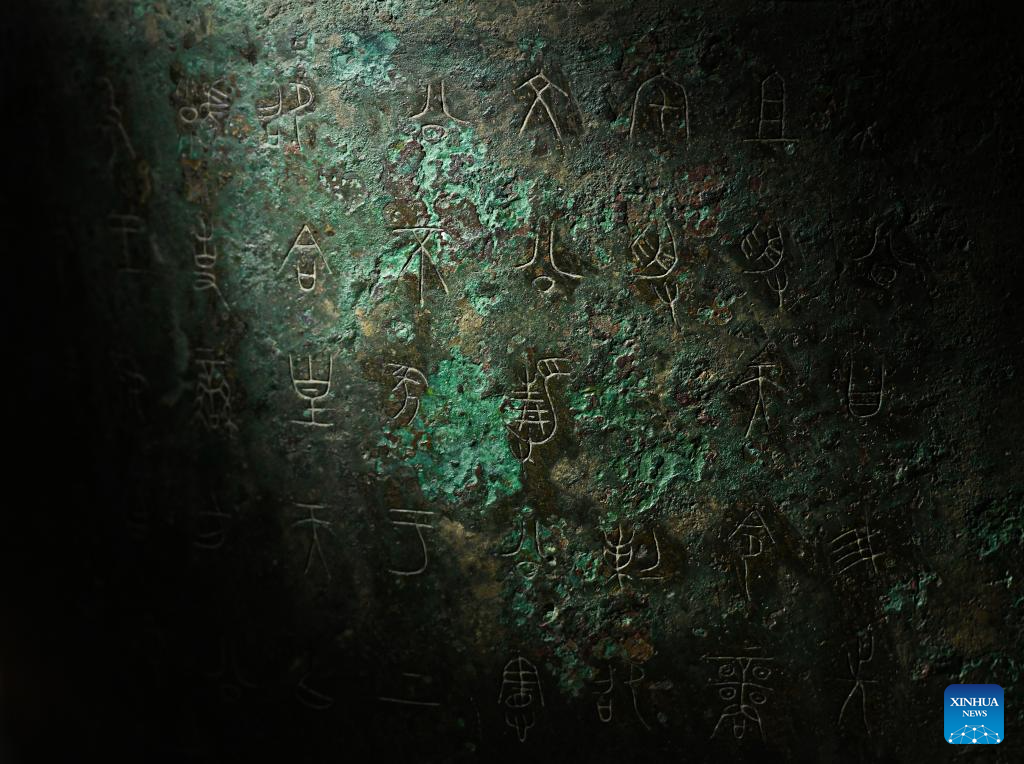
This photo taken on Jan. 23, 2024 shows part of the inscription on a piece of Qin Gong Bo at Baoji Bronze Ware Museum in Baoji, northwest China's Shaanxi Province. Kept in Baoji Bronze Ware Museum, Qin Gong Bo is a type of bronze percussion instrument dating back to the Spring and Autumn period (770 B.C.-476 B.C.). In 1978, three pieces of Qin Gong Bo were unearthed in Baoji.
In addition to its exquisite design, it boasts significant value in calligraphy and historical data with an inscription of 135 Chinese characters. (Xinhua/Zou Jingyi)
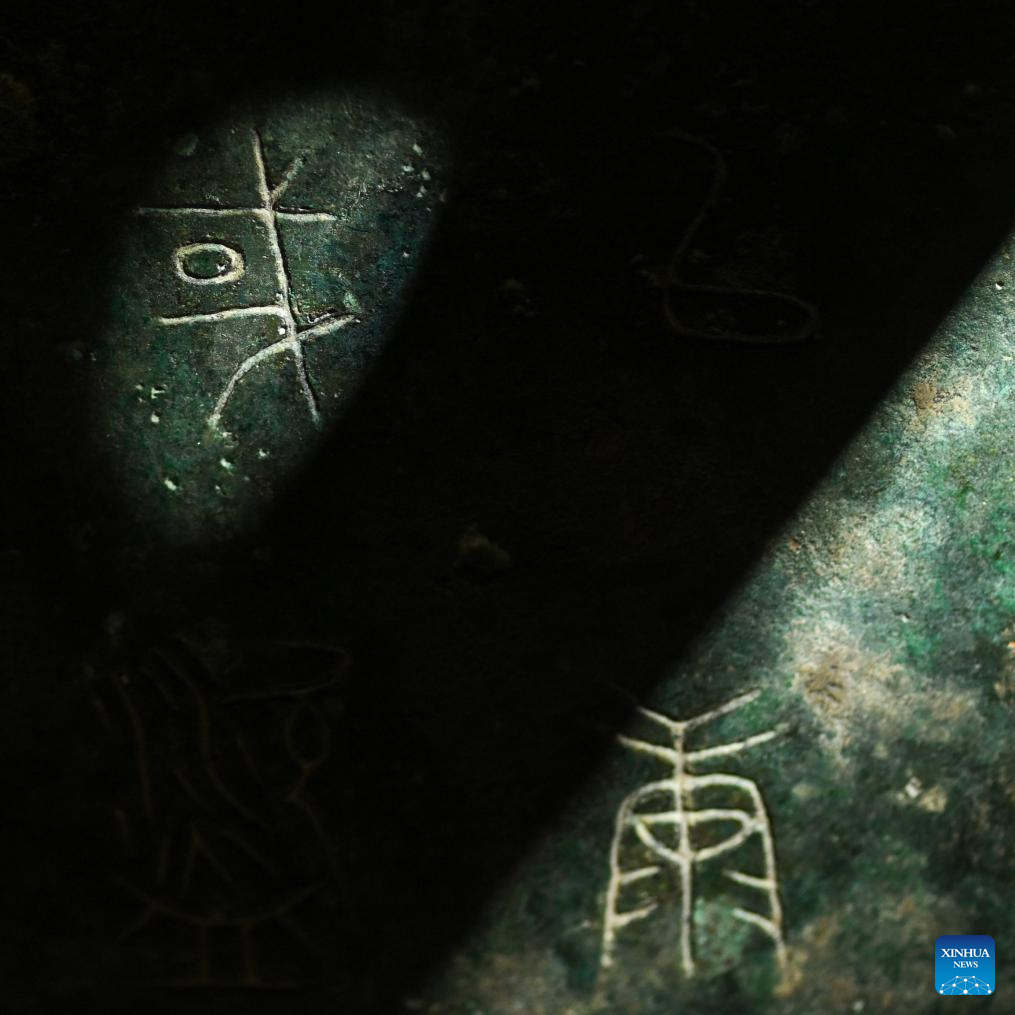
This photo taken on Jan. 23, 2024 shows part of the inscription on a piece of Qin Gong Bo at Baoji Bronze Ware Museum in Baoji, northwest China's Shaanxi Province. Kept in Baoji Bronze Ware Museum, Qin Gong Bo is a type of bronze percussion instrument dating back to the Spring and Autumn period (770 B.C.-476 B.C.). In 1978, three pieces of Qin Gong Bo were unearthed in Baoji.
In addition to its exquisite design, it boasts significant value in calligraphy and historical data with an inscription of 135 Chinese characters. (Xinhua/Li He)
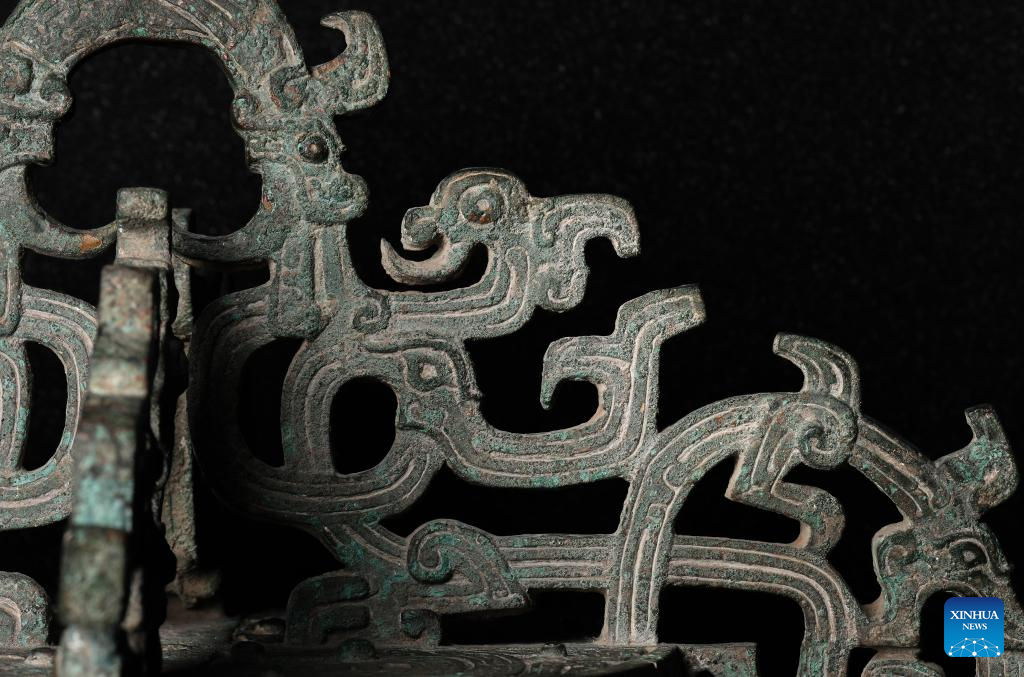
This photo taken on Jan. 23, 2024 shows the pattern of dragon on a piece of Qin Gong Bo at Baoji Bronze Ware Museum in Baoji, northwest China's Shaanxi Province. Kept in Baoji Bronze Ware Museum, Qin Gong Bo is a type of bronze percussion instrument dating back to the Spring and Autumn period (770 B.C.-476 B.C.). In 1978, three pieces of Qin Gong Bo were unearthed in Baoji.
In addition to its exquisite design, it boasts significant value in calligraphy and historical data with an inscription of 135 Chinese characters. (Xinhua/Li He)
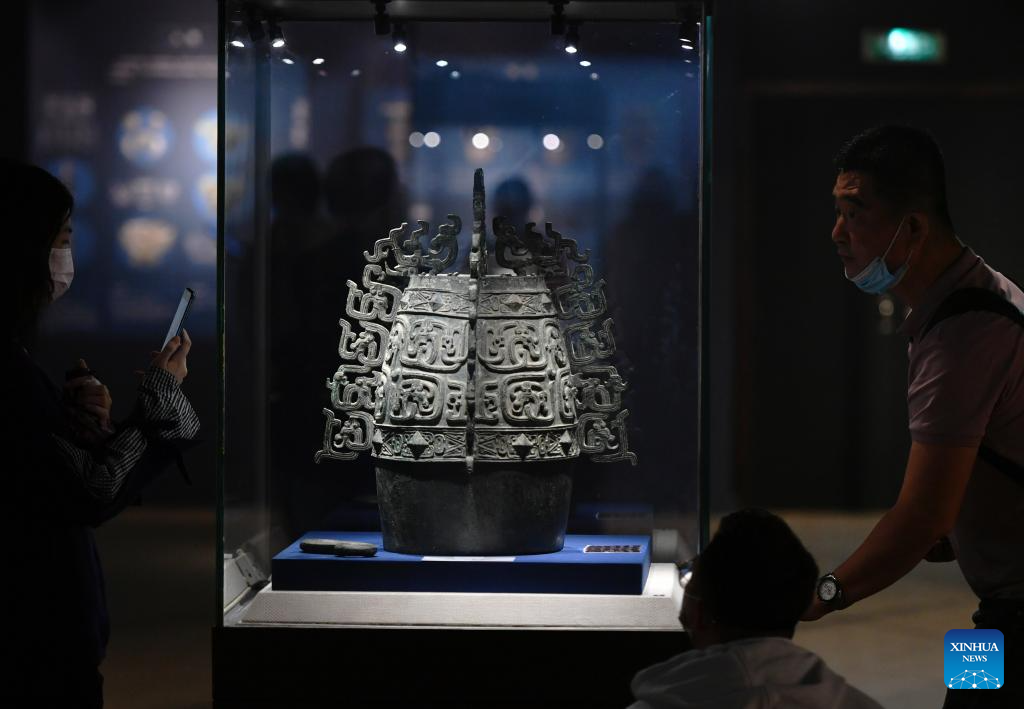
People view Qin Gong Bo from Baoji Bronze Ware Museum at Fujian Museum in Fuzhou, southeast China's Fujian Province, May 12, 2022. Kept in Baoji Bronze Ware Museum, Qin Gong Bo is a type of bronze percussion instrument dating back to the Spring and Autumn period (770 B.C.-476 B.C.). In 1978, three pieces of Qin Gong Bo were unearthed in Baoji.
In addition to its exquisite design, it boasts significant value in calligraphy and historical data with an inscription of 135 Chinese characters. (Xinhua/Wei Peiquan)







